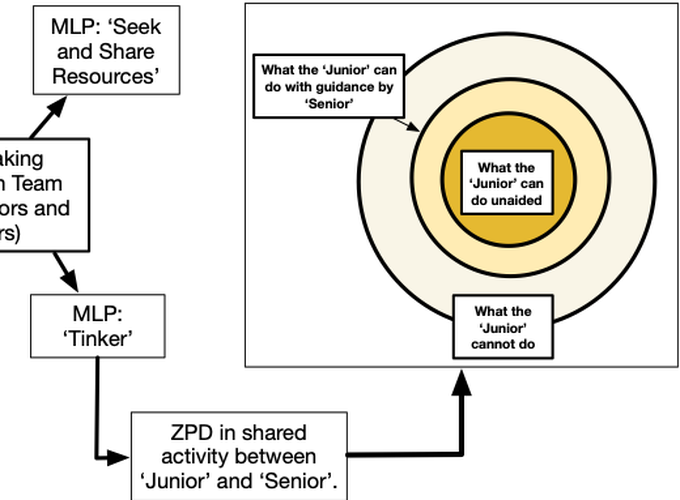Developing Communities of Practice through Peer Mentorship in Making through Micro-manufacturing Model

Developing Communities of Practice through Peer Mentorship in Making through Micro-manufacturing Model
Abstract
The purpose of this paper is to focus on how the “Making as Micro-Manufacture (M2)” model, can elucidate STEM learning and self-efficacy outcomes in high-school students through the development of communities of practice in the classroom. We focus on a dual-tiered curriculum for motivating STEM participation and self-efficacy in high school students. Here, we will detail how a dual-class curriculum was designed, established, and implemented alongside STEM learning and self-efficacy outcomes for students. The M2 model focuses on how high-variability, low volume-products may be produced in real-world settings and for the real-life purpose. We use the M2 model as a motivating scenario in the form of practice-based learning course where high-school students produce instructional, hands-on science kits for a partnered elementary school of the same community. The program has two cohorts of students in the classroom, one of which has prior experience in engaging in the M2 model and its application in the production pipeline for instructional science kits. In our second year of the program, we investigated how these two cohorts interacted with each other in the classroom. ‘Junior’ members, who are of the incoming class, are provided a survey of knowledge and skills necessary to engage in the M2 model. ‘Senior’ members, who previously participated in the program one year prior, are charged with a focus on the managerial aspects of the production, delegating process-oriented roles,’ and acting as peer-mentors for ‘Juniors’. Participants of the program were supported via a combined team of distance mentoring, training workshops by a Tier I University’s engineering technology graduate students and professors, and on-site high school and elementary school teachers. The participating population are situated in a rural, underserved border community consisting of populations typically underrepresented in STEM. The evaluation was performed through the joint use of questionnaires, interviews, and video recordings of daily class sessions. Collectively, our results demonstrate how a community of practice is developed among the two-class cohorts, holding implications for the potential for STEM learning and self-efficacy outcomes as students are given personal charge of classroom outcomes.